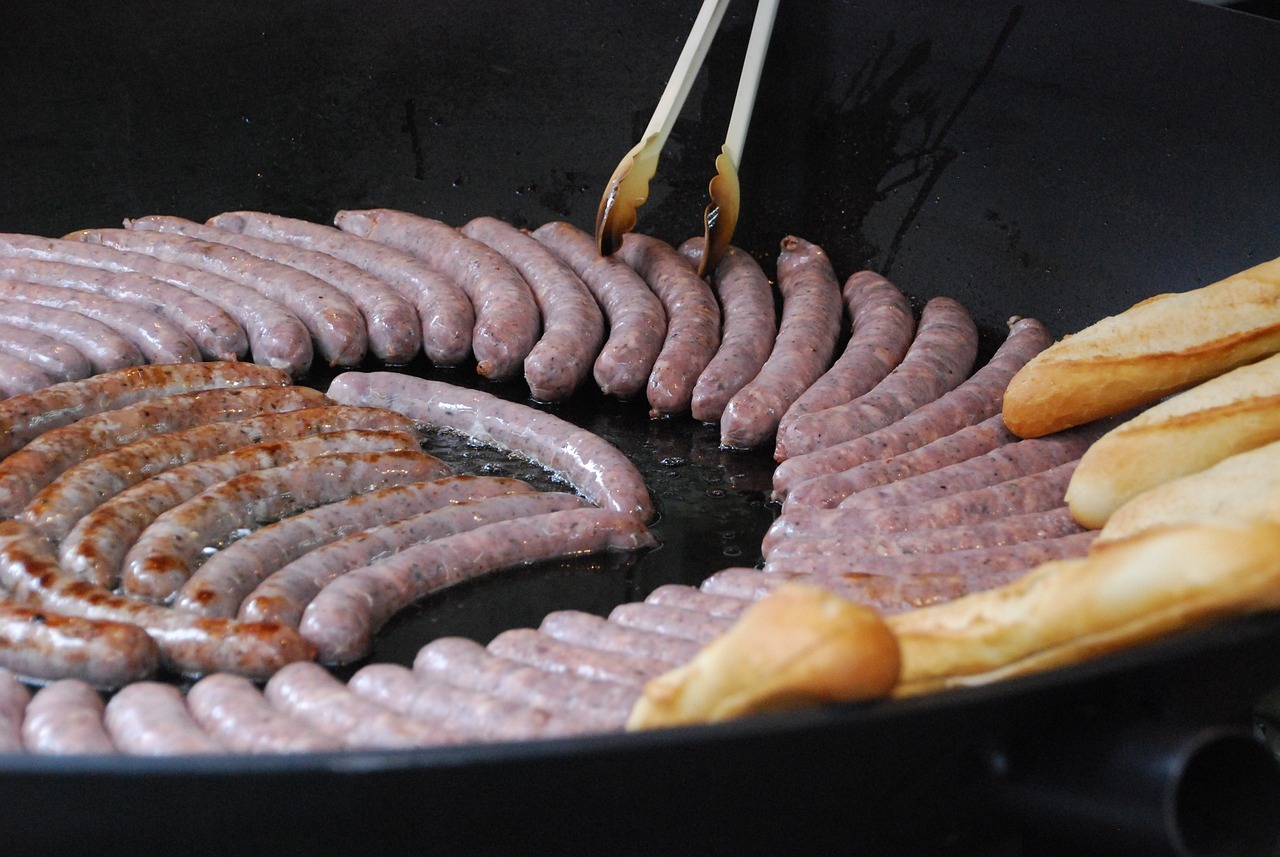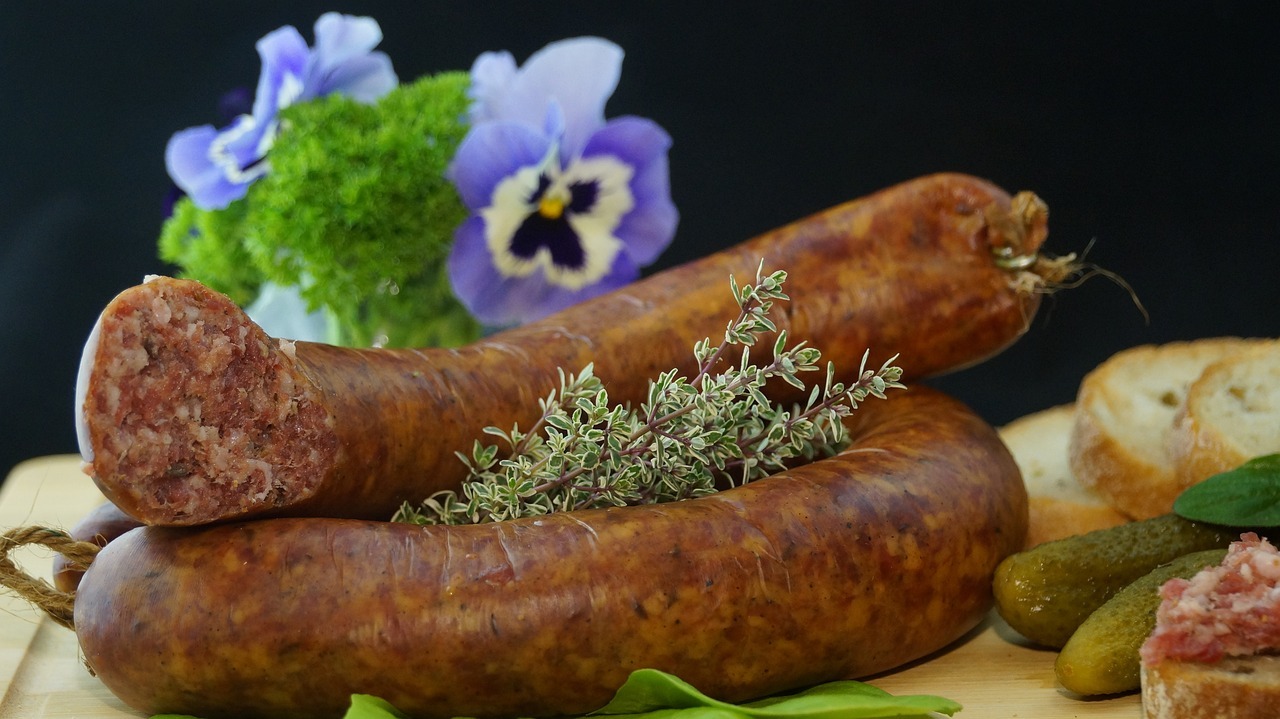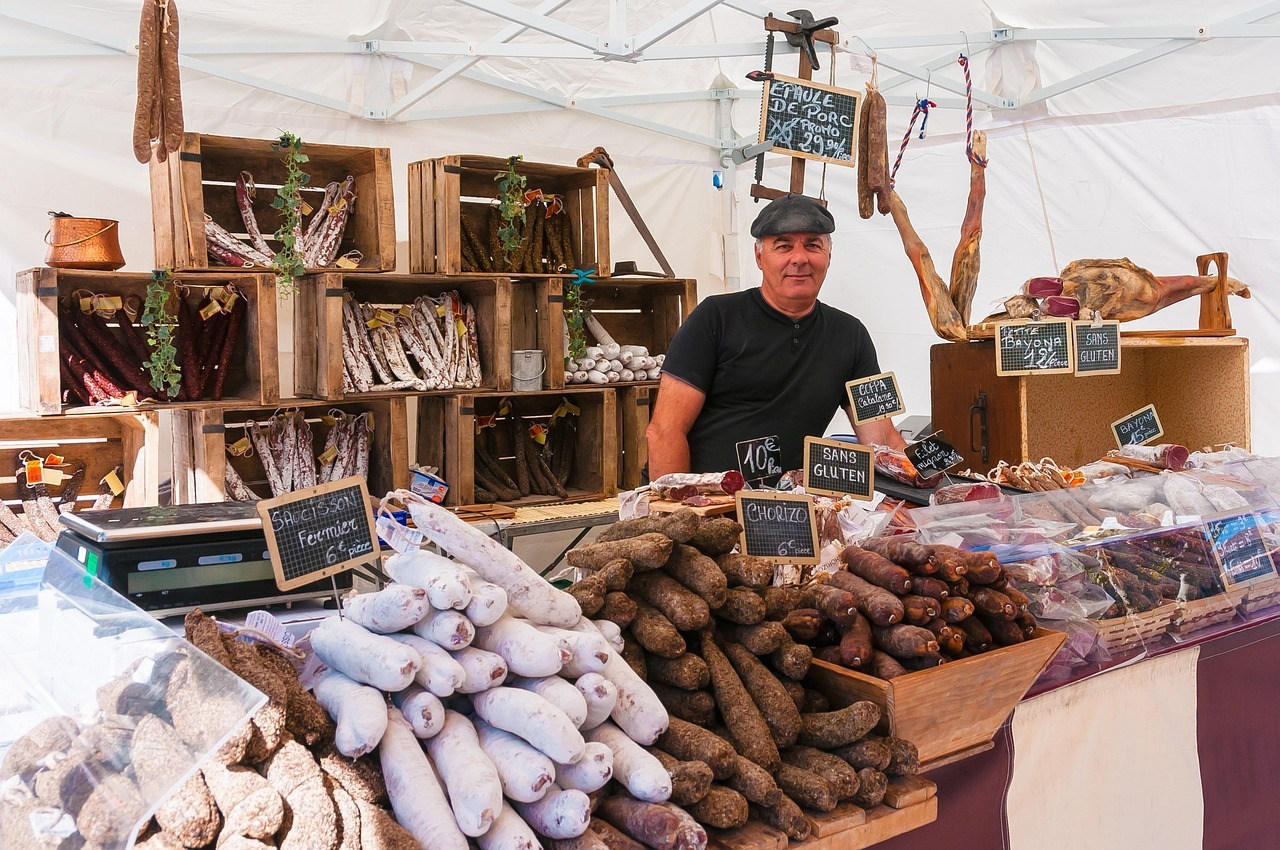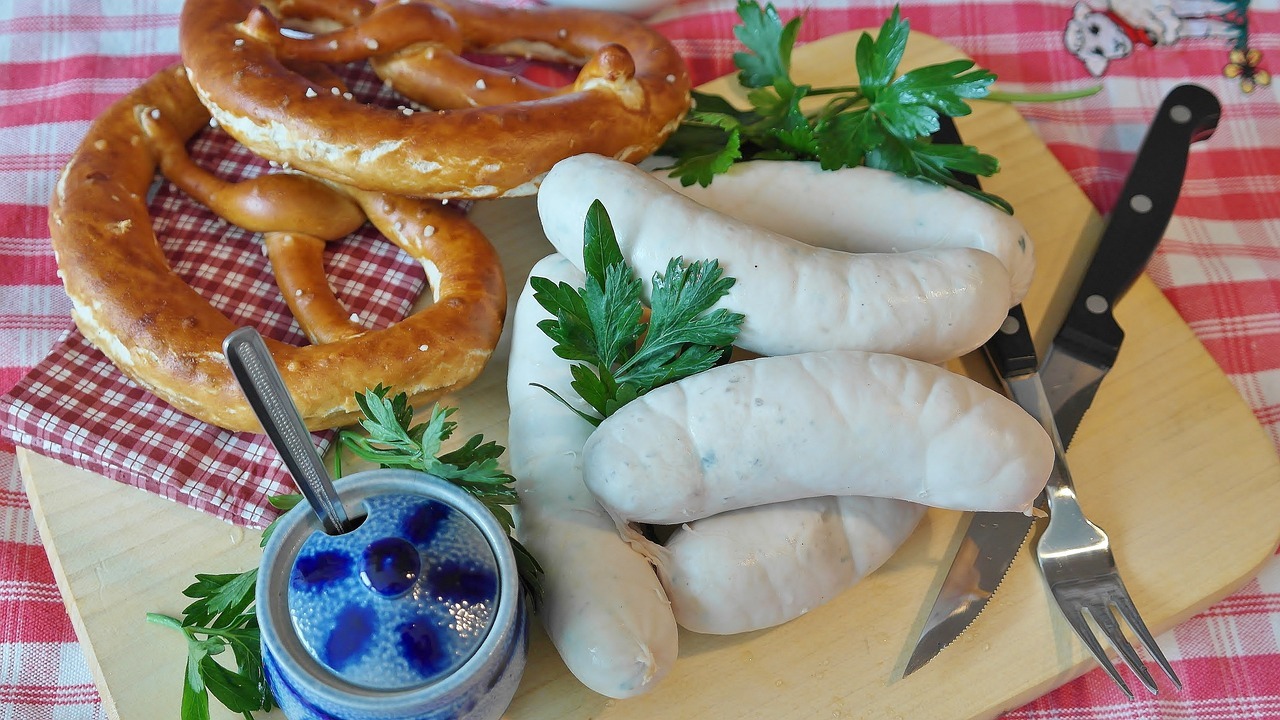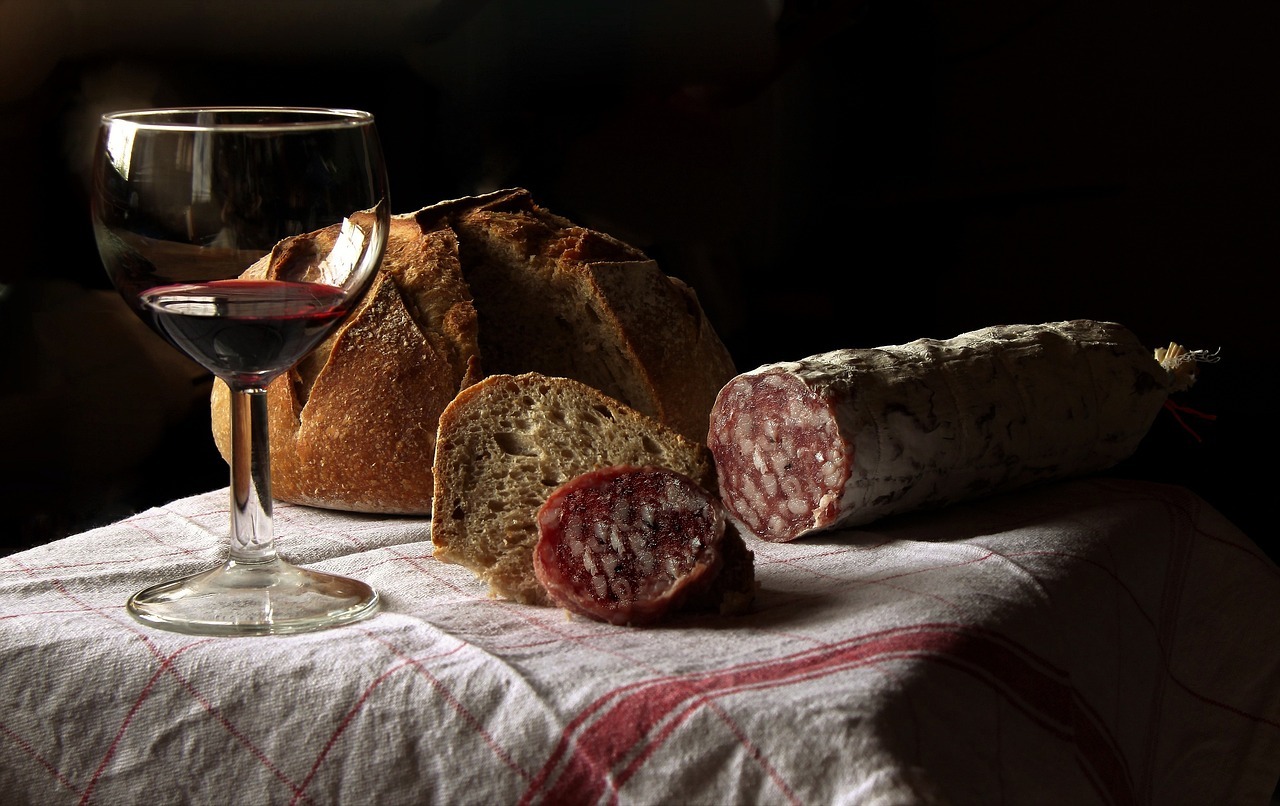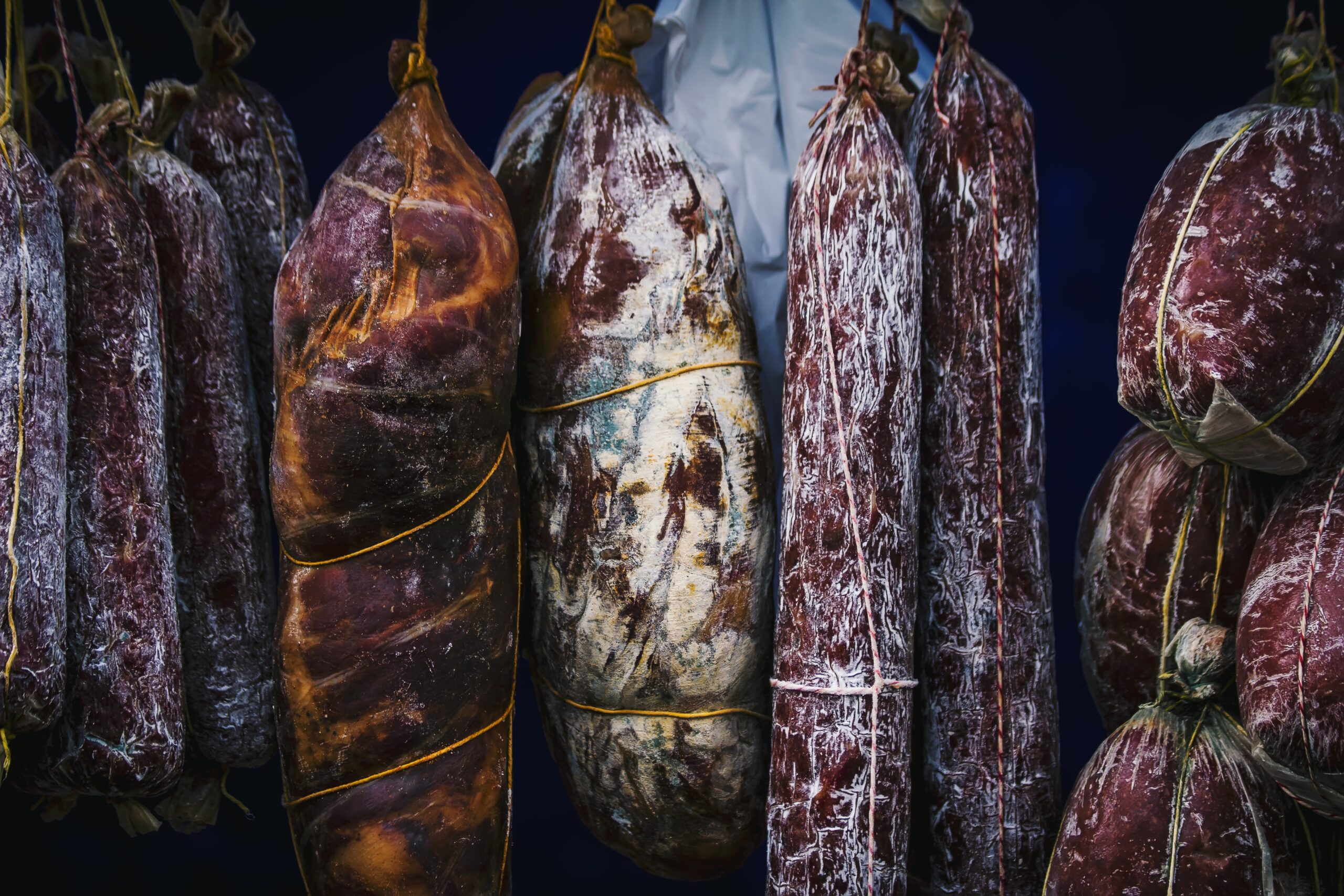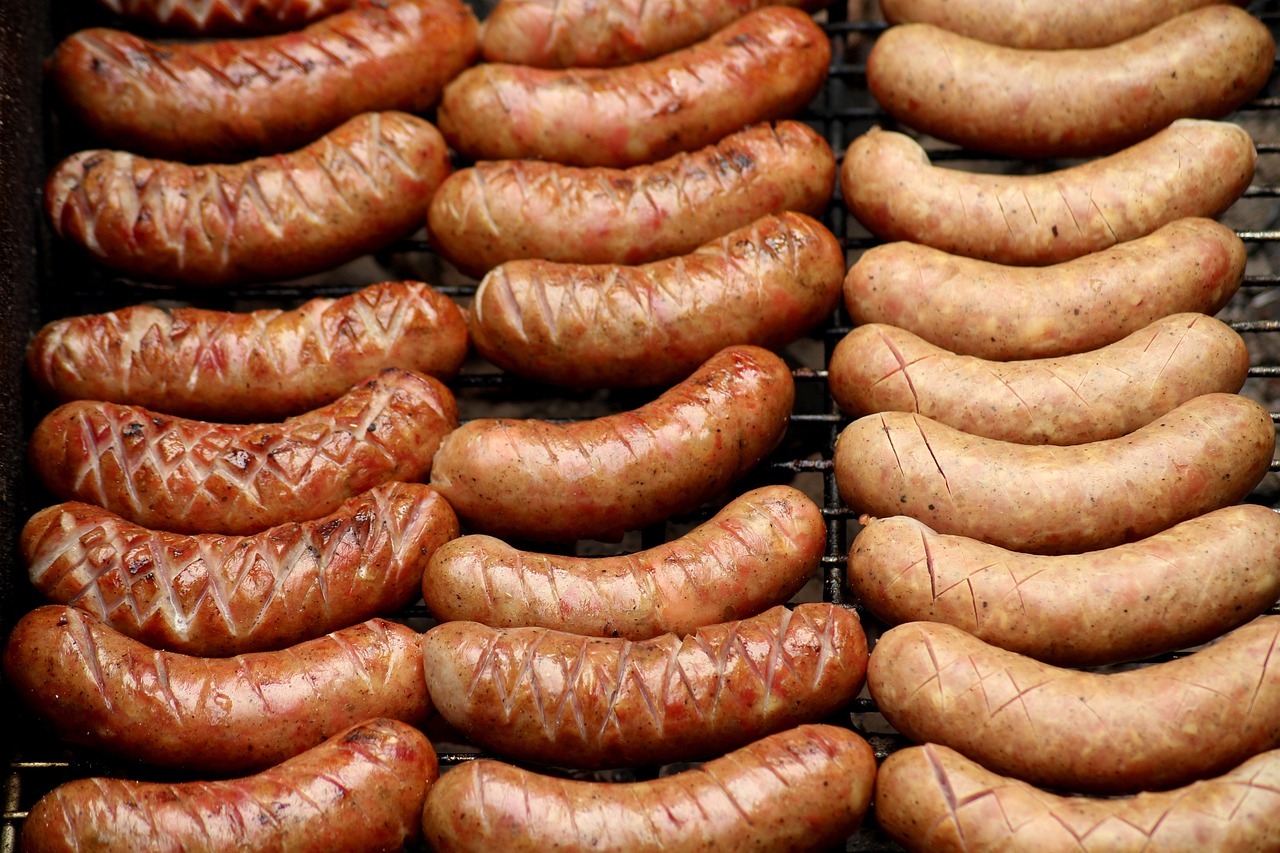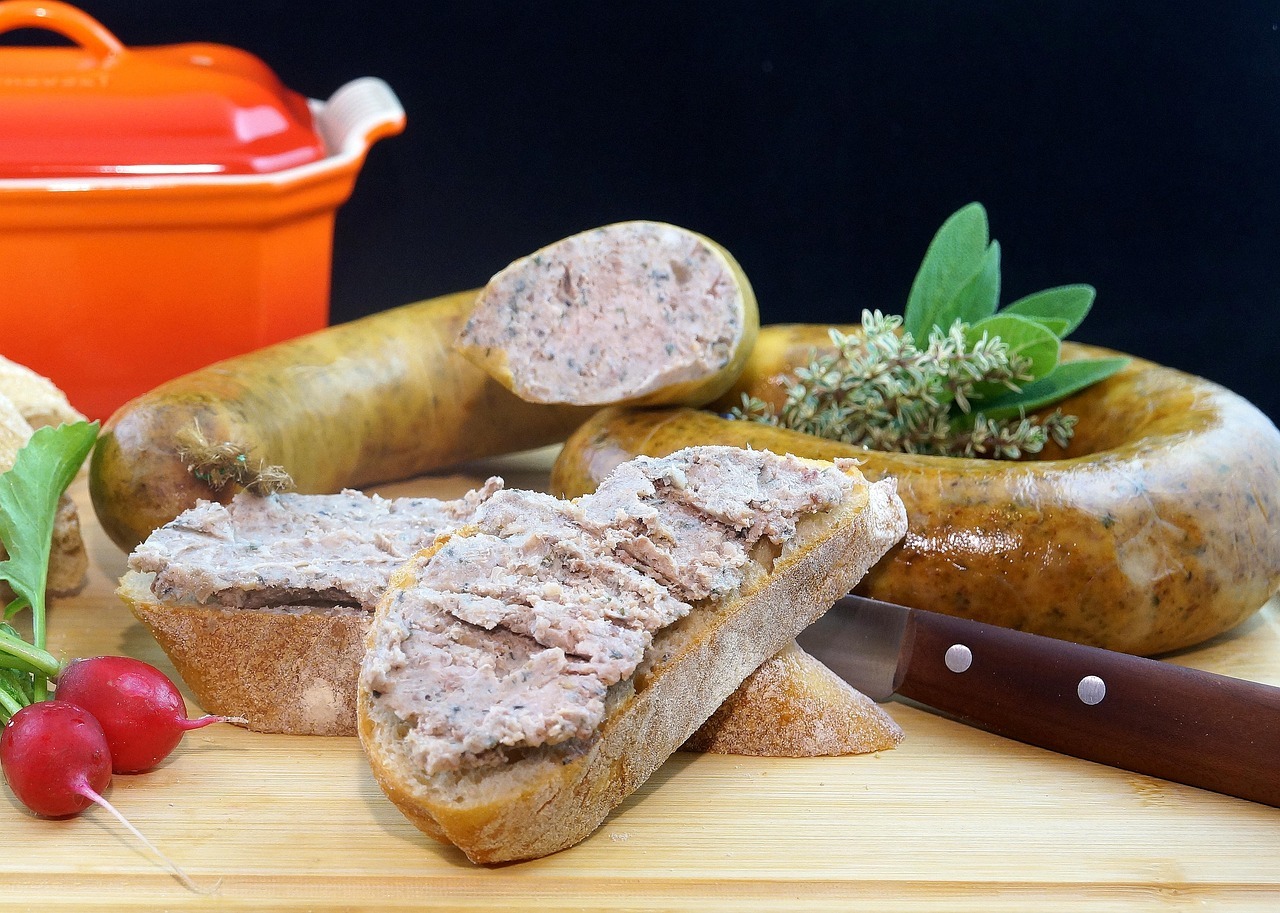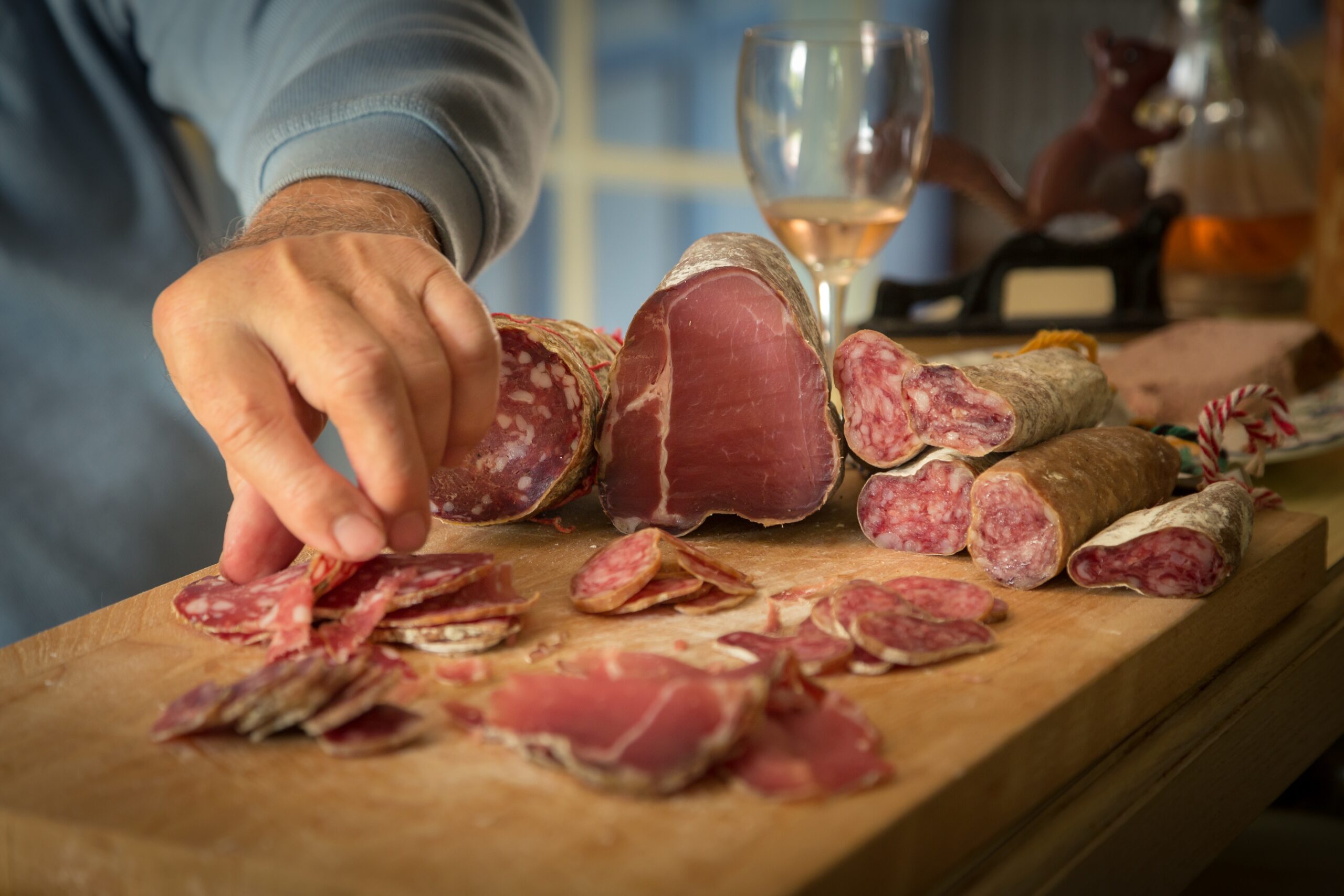Introduction
French sausages come in a wide variety; some of these favorite recipes dates back to the Middle Ages. The many recipes developed in various cities and villages proved the French influence on the world’s cuisine. Although France uses essentially the same technology as other nations to produce sausages, French sausages have a unique and somewhat different texture, flavor, and aroma. This may be explained by the fact that earlier sausages were made using locally sourced herbs and spices, which were, in turn, due to the climate factors of France. One can still fulfill their desire to try exquisite French cuisine without going to France by indulging in these simple French meal ideas.
What is a French Sausage?
French sausage, or “saucisse,” is a delectable food that showcases France’s extensive culinary history. A French sausage is the best option for meat lovers because of its diverse flavors, textures, and regional influences. French sausages are produced with carefully chosen pork cuts and a mixture of flavorful herbs and spices carefully blended by trained artisans and butchers.
The shapes and sizes of French sausages vary, ranging from thick and meaty to thin and delicate. Pork, beef, lamb, or various types of meat can all be used to make them, and each adds a distinctive flavor. Different ingredients and seasonings are used depending on the regional customs and culinary tastes. They can be lightly flavored with herbs like thyme, parsley, and garlic or seasoned with more potent spices like paprika, cumin, and coriander. The mixture of these herbs and spices gives the sausages a lovely scent and depth of taste.
There are many ways of preparing and enjoying French sausages. Among the most popular techniques in preparing these delectables dish to bring out their flavors and produce a satisfyingly crisp exterior includes grilling, pan-frying, and baking. They can be served with various sides, including mashed potatoes, sautéed veggies, or crusty baguettes. French sausages’ savory and fragrant properties are also an excellent addition to stews, soups, and pasta dishes. French sausages have distinct flavors that perfectly capture the essence of French cooking. Aside from French sausage, there is also a trending French snack in America, which is the French taco. You can learn more about it in our article, Is the French Taco the Next Big Culinary Trend in the United States?
The Difference of Saucisson and Saucisse
Knowing the difference between Saucisse and Saucisson is the first step to mastering French sausages. The terms “saucisse” and “saucisson” in French gastronomy refer to two distinct kinds of cured or cooked sausages, each with unique peculiarities. In general, fresh and smoked sausages are referred to be saucisse, while Saucisson explicitly refers to cooked and dried sausages.
Saucisse
Saucisse typically refers to raw sausages made with ground meat, mainly pork, and various seasonings and spices. Different regional and flavor varieties of saucisse, including saucisse de Montbéliard and Toulouse sausages, are available in the market. However, due to the use of fresh ingredients, they typically have a moist and soft texture and have stronger flavors. French cuisine uses saucisse, a flexible ingredient that may be prepared in several ways. It can be grilled, fried in a pan, boiled, or used in stews, casseroles, and other dishes. The rich, savory aromas of saucisse make it a popular choice for enhancing recipes or having it as a stand-alone dish.
Saucisson
Saucisson is a particular variety of dry-cured sausage primarily prepared from pork. However, it can also be made from beef or game, seasoned with herbs and spices. The mixture is stuffed into a casing, usually a natural material like pig intestines, to achieve the sausage’s distinctive shape. In contrast to saucisse, Saucisson is air-dried and cured over a few weeks or months. The Saucisson begins to lose moisture during this period, which enables it to acquire a concentrated and sophisticated flavor. The sausage develops a protective mold or natural covering that helps preserve and improves its taste. It also becomes firm to the touch.
Saucisson is primarily eaten raw and is frequently served sliced thin. Saucisson has a rich, savory, and complex flavor with a dense, slightly chewy texture. Various Saucisson flavor profiles are determined by the ingredients used, which may include garlic, black pepper, wine, and local herbs and spices. It is frequently prepared as a charcuterie item, thinly sliced, and either on its own or as part of a cheese or meat platter. It is a favored component of classic French meals, giving salads, quiches, and stews additional depth and complexity. Saucisson is valued for its mouthwatering flavor and capacity to be kept long and relished over time. It is a favorite among meat lovers and connoisseurs of charcuterie because of its robust flavors and artisanal craftsmanship, which make it a representation of French culinary tradition.
Different Types of French Sausages
French cuisine has many kinds of sausages with unique flavors and regional influences. These sausages, which can be eaten grilled, pan-fried, or added to various dishes, represent French cuisine’s creativity. They captivate the palette with their distinctive flavors and highlight the diversity of French cuisine’s regional specialties.
1. Boudin Blanc de Rethel
Traditional French sausages like Boudin Blanc de Rethel have a distinct position in the Champagne-Ardenne region’s culinary history. White pudding sausage known as “boudin blanc de Rethel” has been valued since the 17th century. It is created from prime slices of pork, pork fat, fresh eggs, milk, and a secret blend of seasonings. It is traditionally made in the Ardennes region of France’s Rethel district. This sausage has a pale hue and a fine to medium-coarse texture. It is offered in several flavors: simple, forest, mushroom, truffle, and truffle juice. Grilled Boudin Blanc de Rethel is frequently served with roasted or mashed potatoes and champagne.
Milk and egg white generally contribute to the complex flavor of the sausage and keeps the color light. There are two methods for processing Boudin Blanc, the Chaud method, which uses hot milk, and the Froid method, which uses cold milk, to achieve its distinct color and flavor. The former produces a lighter texture for the sausage while taking more time. The French frequently serve grilled or fried Boudin Blanc. For a hearty breakfast, serve with mashed or roasted potatoes and champagne.
2. Boudin Noir
One of France’s oldest and most well-known sausage varieties is the blood sausage which dates to 2000 B.C. The traditional Southern French blood pudding sausage known as boudin noir is made with pig blood, hog snouts, onions, and spices. Before World War II, it was a staple of every ordinary family’s diet. Boudin Noir, from being a family favorite but has now become a distinctive sausage variety that is only found at reputable butcher shops when the practice of raising pigs for slaughter declined. To balance the strong flavor of the pig blood, dried fruits are frequently added before being packed into shells. Typically, prunes and raisins are the most preferred option for this duty.
Because of its unique ingredients, Boudin Noir may not be everyone’s favorite. However, it has been a significant part of French culinary tradition. It has become a mainstay in French cuisine, particularly in areas like Normandy, Brittany, and the Auvergne, because of its savory, earthy flavor and distinctive texture. Boudin Noir offers a genuinely authentic and daring culinary experience showcasing French sausage craftsmanship and complexity.
3. Andouille de Guémené
Andouille de Guémené is a smoked pig sausage from Guemene-sur-Scorff in northwest France. It is created with chitterlings, or pig intestines and stomachs, which are pulled over one another to create a sausage that is 60 cm long and 6–8 cm in diameter. Several processes are involved in making this one-of-a-kind sausage, which includes salting, sorting, assembling, emptying, degreasing, smoking over beech wood, drying for a few weeks to up to nine months, and cooking in hay flavored. The process of making andouille was first made in 1930 by Joseph Quidu, a local farmer’s son.
Andouille de Guémené has a distinctively coarse texture which offers a deliciously chewy and meaty bite. Traditionally, andouille de Guémené is cooked and eaten either grilled, pan-fried, or simmered. Like other French sausages, it can be used in many different recipes, including stews, cassoulets, and as a delicious addition to soups. Gumbo, jambalaya, and even pasta dishes can benefit from the smoky flavor of andouille de Guémené. Beyond Brittany, Andouille de Guémené is renowned for its unusual flavors and rustic appeal, which make it a staple of classic French charcuterie platters and a symbol of the nation’s extensive culinary heritage.
4. Saucisse de Montbéliard
A smoked sausage known as Saucisse de Montbéliard is produced from pork and served in a casing made from natural pork intestine. The use of wood and sawdust in the smoking process gives it a distinctively smokey flavor. The amber, golden-brown hue of the sausages is also a result of this process. Lean pork and hog fat are used in the manufacture, and the meat is perfectly minced and kneaded. Spices and herbs like cumin and pepper are added to the combination to give the finished product a delectable, moist, soft texture and a subtle smokey flavor.
The smoking method used in making Saucisse de Montbéliard makes it unique from other French sausages. The sausages are typically smoked over fir wood after being seasoned, giving them a distinct smoky flavor and an enticing golden-brown hue. The sausage gains a unique quality through the smoking process, improving its flavor and aroma. Because of its distinctive spice combination and the smokey undertones from the smoking process, it is a favorite among sausage connoisseurs and an essential part of the diverse cuisine of the Franche-Comté area.
5. Fuseau Lorrain
The regional specialty sausage of the French Lorraine region, fuseau Lorraine, has been part of French cuisine since the 17th century, with a soft, dry-smoked sausage quality. It is commonly made of ground pork and other ingredients such as red wine, parsley, nutmeg, and minced shallots. It can also be made using a beef combination of onions, bay leaves, and cloves. For the beef to absorb the flavor from the spices and herbs, it is then allowed to rest for one to two days before the whole onions, bay leaves, and cloves are removed. The mixture is then stuffed in a natural pig intestine known as the fuseau in French.
The sausage is known as “Fuseau” because of its spindle-like shape, which resembles a spinning top. After being poached in water, the sausage is gently roasted or grilled to finish, giving it a crisp exterior while preserving its juicy interior. The aromas are preserved, and the moisture of the sausage is maintained during this cooking process. The Fuseau Lorrain is frequently eaten as a stand-alone dish with sauerkraut, potatoes, or other customary sides. Due to its delicate yet delicious taste, it is a common favorite inclusion in charcuterie boards and as part of regional cuisines like Choucroute garnie, a traditional Alsatian dish made with sauerkraut and other sausages.
6. Knack d’Alsace
Since Knack d’Alsace or Strasbourg sausages are grilled, smoked, and made of pork and beef, they are usually of darker pink than the well-known Frankfurters. Their unusual name, “knack,” refers to the noise they produce when eaten. Before being stuffed into sheep casings, pork and beef are ground into a paste and combined with sugar, ice cubes, salt, plasma, liquors, spices, and other natural flavorings. Beechwood alone is used for the smoking process. The sausages have a delicate, smokey, and meaty flavor and a hard, crispy texture.
The texture of the sausage is compact and chewy. Traditionally, this sausage is boiled or simmered in water to bring out the flavors while maintaining suppleness. It is frequently served with mustard and sauerkraut on a baguette or other traditional Alsatian bread. “Knack Avec Choucroute” is a traditional and cherished dish at festivals, street fairs, and family gatherings. It is made of savory sausage, tangy sauerkraut, and spicy mustard. It reflects the solid Franco-German influences that define Alsatian cuisine and represents culinary traditions and regional pride.
7. Chipolata Sausages
If you see someone grilling in France, you can bet they are grilling Chipolata or Merguez, a lamb sausage from Northern Africa. Chipolata sausage is made with coarsely ground pork and is frequently seasoned with salt, pepper, and herbs. This fresh sausage was created in France and published by Escoffier in his cookbook “Le Guide Culinaire,” published in 1903. The Italian term “cipollata,” which means “prepared with onions,” is the main reason the sausage is called Chipolata. This short, thin sausage is a favorite breakfast food in France and is frequently grilled or fried. It is also common in other countries, particularly in the U.K., where Chipolata is a well-liked dish during Christmas dinner.
Chipolata sausage’s adaptability is one of its distinguishing features. It is a well-liked option for breakfast, brunch, barbecues, and even celebratory feasts because it can be consumed in various ways. Chipolatas are frequently grilled or pan-fried, bringing out their juicy flavor and producing a crunchy exterior layer. Chipolatas are commonly eaten in France as part of a festive cuisine called “chipolatas aux herbes,” in which they are cooked with herbs, vegetables, and occasionally bacon. Along with eggs, bacon, and other breakfast favorites, they are a common component of traditional English breakfasts. Chipolata sausage is famous among people who value flavorful and simple-to-cook sausages due to its delicate and savory taste and slim shape.
8. Saucisse de Toulouse
It debuted in the 18th century and has become a staple dish at many neighborhood markets. Saucisse de Toulouse is now a recognizable product typically rolled in a coil at Toulouse’s old-fashioned marketplaces. Salt and pepper are the only other ingredients in this classic Toulouse sausage made of coarsely chopped pork. The sausage can be grilled, braised, or fried in addition to being used in cassoulets. It can also be eaten with mashed potatoes and stewed vegetables. Toulouse sausage is made with finely chopped pork and additional seasonings and is sold in coils, much like the well-known Cumberland variety in the U.K.
Toulouse sausage is a fantastic accompaniment to cassoulet today. This uncooked sausage can be cooked and eaten as a main course or cured and dried to make a dried sausage link. It is a well-liked beef chunk for creating charcuterie boards as well. It works well when included in stews or when steamed with vegetables. Saucisse de Toulouse shows regional culinary traditions and exemplifies the art of French sausage-making, whether it is consumed in a traditional French dish or utilized as a flexible ingredient. Food lovers seeking to taste authentic French gastronomy love it for its meaty texture and robust flavors.
9. Saucisse seche d’Auvergne
This thick, dry-cured sausage, known as saucisse seche d’Auvergne, comes from Auvergne in central France. It is widely renowned for its long history of farming, agriculture, and meat-curing. In contrast to saucisson sec d’Auvergne, another variation prepared with conventional pork flesh or a combination of pork and beef, this sausage is made using only sow meat. All the famous Auvergne sausages are produced by hand and cured for around two months. The sausage acquires its flavor and texture during the drying process. It becomes solid and dry, losing moisture, and has a dense, slightly chewy quality. A rich and complex flavor profile is produced by the infusion of spices and herbs into the meat during the curing process, which amplifies the flavors. Many people eat saucisse sèche d’Auvergne as a snack or an entrée. It is usually served with bread, cheese, and other charcuterie products, complementing a range of accompaniments and assorted cheeses.
Diots are the specialty of Savoy province; these sausages are very large and meaty, made of the fatty pig minced and seasoned with pepper, salt, and nutmeg. The sausages are approximately 5 cm thick and up to 15 centimeters long. Diot has a striking dark pink color that makes it easy to identify from a distance. You can also feel its soft texture when you touch it. You can taste this smoked sausage’s intensely meaty and smokey flavor first bite. The French have a long-standing custom of cooking Diot in white wine. Additionally, you might serve it hot alongside polenta or cooked potatoes. Another fantastic suggestion is to eat Diot cold in a sandwich with Dijon mustard. Diot sausages are frequently used in traditional Savoyard meals like Tartiflette, a gratin of potatoes, cheese, and bacon, and Raclette, a dish of melted cheese served with boiled potatoes and a variety of sides. Additionally, they are relished by themselves, with mustard and regional specialties like polenta or Alpine-style cheeses.
Conclusion
These incredible varieties of French sausage are an essential component of the cuisine of France. The category includes all the well-known brands in the industry, despite not being as varied as German or Italian sausages. French sausages have many different flavors, textures, and regional peculiarities. Each variety of sausage reflects the rich culinary tradition of France, from the coarsely ground and savory Saucisse de Toulouse to the dry and powerful Saucisse sèche d’Auvergne; these sausages are prized not only for their flavor but also for their cultural importance.
French sausages are incredibly adaptable and may be used in various cuisines, demonstrating their incredible adaptability. They can be served for different events and significant family occasions, whether the delicate Chipolata sausage in morning dishes, the hearty Knack d’Alsace on a charcuterie board, or the distinctive shape and flavors of the Fuseau Lorrain. Knowing about the varieties of French sausage is a fascinating voyage into the country’s interesting culinary traditions. These sausages symbolize France’s rich culinary tradition, from the ingredients’ simplicity to the precise craftsmanship used in their creation. French sausages provide a delicious culinary experience that continues to enthrall food lovers worldwide, whether consumed on their own, as part of a classic recipe, or as the main attraction of a charcuterie presentation.


